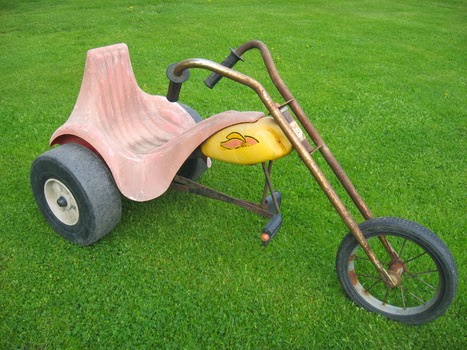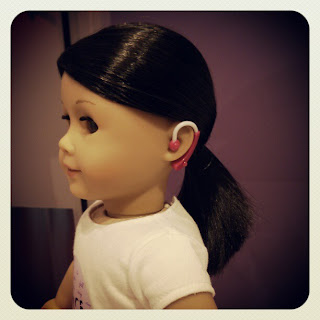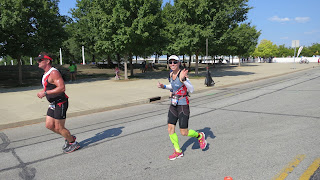Time to bring out the 80s toys!
As a parent, have you ever thought about the toys you played
with as a child? Do you have a favorite
toy that comes to mind when you think of your childhood days playing with
friends in your neighborhood, at school, or parties? As technology advances, toys for kids may become
cooler and better in some ways, but what affect does it have on their future
health?
Our lives are being pushed in a fast-paced society limiting
our time to enjoy the simple things in life.
The simple things are quite often the key ingredients to a healthy
lifestyle. However, time limits our
ability to be creative or spend time with the ones we love. When was the last time you had a sit down
meal with your family? We often seek out what’s more convenient such as foods
that are quick to eat or maybe easy for on the go, but it’s cheaper. Why is it that processed foods require more
work in the factory and more complex ingredients, but yet are still economical?
Technological advancements may create some pretty cool toys and
provide easy entertainment, but have you ever thought about kids and their
fitness levels or how much physical activity they get each day? The Physical
Activity Guidelines for Americans, 2008 require children to do at least 60
minutes of physical activity a day and approximately 10,000 steps/day. In addition, the government has mandated
elementary schools to provide 20 minutes of recess each day and at least 50
minutes of Physical Education per week.
Nevertheless, it’s certainly a hot topic being discussed at the round
table in school districts. Test scores
among children K-12 are declining in some areas and too often, recess and PE
times are taken away to focus more on “education” or improving overall test
scores, or recess and PE is taken away as a punishment for poor behavior or
disrespect. What the public eye might overlook
is that increased physical activity actually benefits children in many ways. Some studies show that it improves cognition
especially math and reading skills. It
also improves attention, reduces the risk of diabetes, cardiovascular diseases,
and obesity, and even reduces behavioral dysfunctions as well as anxiety and
depression.
Now is the time to
teach the children the importance of play, play, play and reintroduce them to
your games and toys! According to the
Centers for Disease Control and Prevention (CDC), the prevalence of childhood obesity
has nearly tripled since 1980…it’s time to bring out your 80s toys! I find it interesting to reflect on children
of past generations and how we’ve evolved from active lifestyles such as riding
bikes to/from the neighbors, finding abandoned lots to play kickball, tag, or
football to sedentary lifestyles watching hours of TV or playing video
games. Of course, our social environment
has inhibited our ability to regenerate the old school days triggering us to be
cautious of our surroundings. Most
school districts are working hard to brighten students’ futures academically
and there is only so much they can do to intervene and get children
moving. There are numerous physical
activity campaigns targeting the schools but there are also barriers in the
school environments (i.e., lack of playgrounds, impeding weather, small gyms, limited fundings,
etc.). The active lifestyle starts young
and at home. In the long run, children
today can have a chance to live longer, healthier, and lower the overall
economical healthcare costs. Better
health means a happier self and more money in our pockets. Here are some ways to get started on physical
activity at home, school, and even simple nutrition ideas:
Tips from Tiff
·
As a
parent get involved and allow your child to make the choices. They can help pick out the groceries, have
them identify their favorite fruits/veggies, help with simple meal prep in the
kitchen, play with food every once in a while and design “art” plates. My 2nd grade homework assignment
was to eat something new at Thanksgiving – I was scared to try sweet potatoes,
but ever since then…I love it (of course, the good ole southern way, well,
maybe not quite so healthy).
·
Have your
child try multiple sports or recreational activities. Some things require time and money such as
playing on sports teams or individual activities such as dance, so start a
neighborhood activity --- it’s free! Plus, they’re developing not only motor but
social skills as well. If someone has a
trampoline, those are always fun and involves LOTS of movements!
·
Stuck
inside or limited space? Get
creative – clear out some space in your basement or remove the cars from the
garage in case of bad weather and build obstacle courses. If we weren’t outside playing tag,
hide-n-go-seek in the dark (out in the country), flag football, or HORSE on
local basketball courses my friends and I would create race courses in our
basements around poles and junk piles on our 80s wheelers (tricycles, roller
racers, roller skates or the beast --- the chopper pedal trike!). Or we’d play American Gladiators (not sure if
our parents knew we were standing and running on our couches, well they do now
– sorry!). Those are some of my favorite
memories if we have kids someday, I would hope it carries over.
 |
| The awesome Chopper Pedal Trike we often fought over! Source: http://www.collectorsweekly.com/stories/94781-vintage-chopper-pedal-trike-ride-on-toy |
·
So your
kids like technology and you have a Xbox, Nintendo System or Wii. Play interactive games! My husband and I will often stand next to
each other and have some fun jumping, running in place, and compete. It’s an adult game, too!
·
If you’re
an 80’s mom…bring back the golden
days! Remember Red Rover, Tag, Duck Duck Goose (for the little ones), Hop
Scotch, those fun and crazy playgrounds, wiffle ball, building treehouses,
hiking the woods for arrow heads, and dodgeball (which is probably not legal
anymore)? Toys and games can be modified for children with disabilities. In fact, ToysRUs has a Toy Guide for children that are "differently-abled."
·
It’s
snowing…AGAIN! Put on your snow boots and bring out the sleighs! Don’t have
sleighs, use trashcan lids or whatever you can find that will get you down the
hill! In fact, did you know you can burn
over 300 calories an hour just sledding and playing in the snow?!
·
Limit
those hours on electronics (TV, Computers, Video games)! One thing my husband and I have started doing
is have a non-electronic date night and we train (run) together a couple times
a week to keep each other motivated. The
same can apply to families as well.
·
School
district have some fundings? Take
advantage of devices such as accelerometers so the kids can track the number of
steps they take per day. You can even
have classroom competitions and make it fun.
Some products I use on my job for 5th graders that provides
great behavioral feedback (kids love these cool, attractive devices) include
pedometers by Eckho or Polar Active watches.
Another device often used is a Fitbit.
The students can track their results and wear them during their fitness
assessments during PE. However, it may
be easy to keep them in the classrooms overnight --- not a high return rate if
they go home with them even though, it is beneficial for them to track their
steps and/or activity outside of school to assess their 7-day activity.
·
Lack of
space in the schools? I’ve seen teachers get creative and move desks around
for in-classroom play that requires standing and moving around such as
bally-ball (volleyball with a balloon).
In addition, some software companies have designed “Brain Break”
software for in-classroom movements. The
idea of “Brain Breaks” is to give students frequent, short breaks throughout
the day (2-3) to improve thinking/cognition and reduce classroom behavioral
dysfunctions. See GoNoodle for more info
and a white paper on some of their results.
Whether you’re a parent/guardian or a teacher/school
administrator here are some helpful resources to start with or if you simply
want to learn more about physical activity and nutrition in the schools and at
home:
NOTE: I’m not a parent nor am I a teacher, but these ideas
were generated from inspirations I had from my new job working on physical
activity projects and assessments within the schools and providing nutrition
education for kids with cerebral palsy.
A job I have grown to love. It’s
my passion to share the joy and self-confidence I gain from an active lifestyle
to help children get started with physical activity in effort to enrich their
self-esteem and minimize any long-term, preventable illnesses.
Quote of the day: When asking 5th graders why
physical activity is important their responses – “so we can have healthy hearts…”
“so we can grow up with strong bones…” “so
we can get lots of steps (referring to their pedometers)” “So I can have nice
legs” “So we can take care of mom.”
Bible verse of the day:
Train a child in the way he should go, and when he is old he will not
turn from it. ~ Proverbs 22:6


Comments
Post a Comment